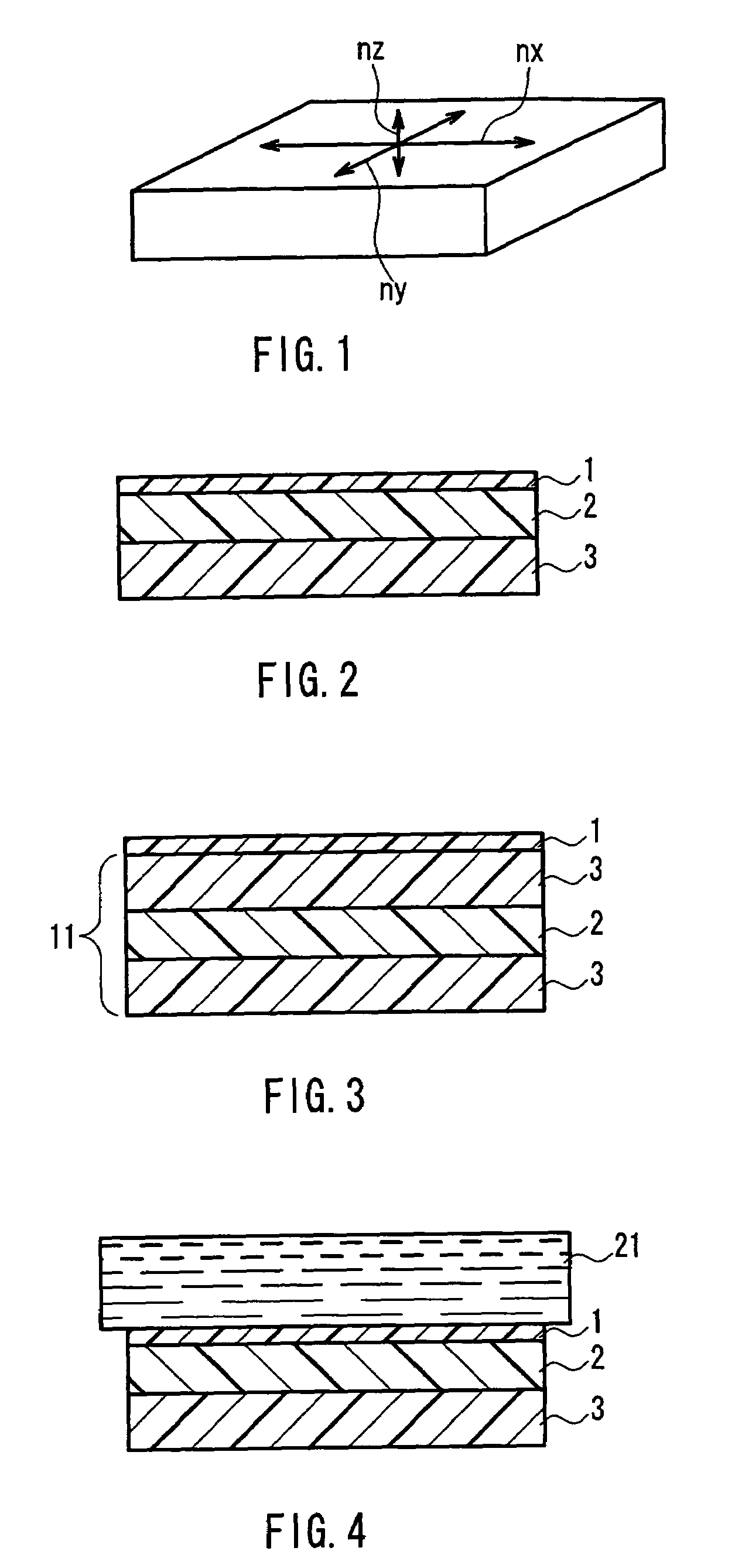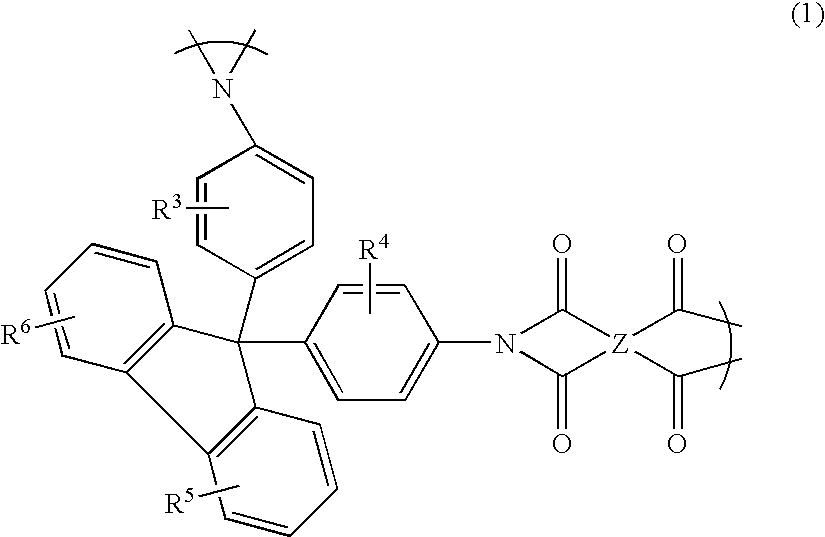Optical film
a technology of optical film and film body, applied in the field of optical film, can solve the problems of film cracks and/or variations in retardation, and achieve the effect of excellent contras
- Summary
- Abstract
- Description
- Claims
- Application Information
AI Technical Summary
Benefits of technology
Problems solved by technology
Method used
Image
Examples
example 1
[0155]Polyimide having a weight-average molecular weight (Mw) of 110,000 was first synthesized from 2,2′-bis(3,4-dicarboxyphenyl)hexafluoropropane (6FDA) and 2,2′-bis(trifluoromethyl)-4,4′-diaminobiphenyl (PFMBTFMB) and then dissolved in cyclohexanone to prepare a 15 wt % solution of this polyimide. The thus-obtained polyimide solution was applied onto a 75 μm thick triacetylcellulose (TAC) film (transparent polymer film) prepared by stretching a TAC film to 1.3 times its original length at 175° C. by fixed-end transverse stretching. Thereafter, the film having a layer of the polyimide solution was heat-treated at 100° C. for 10 minutes, thus forming a completely transparent and smooth birefringent layer (a) (polyimide film) having a thickness of 6 μm on the TAC film. In this manner, an optical film was obtained. The birefringent layer (a) of this optical film exhibited optical characteristics satisfying nx>ny>nz.
example 2
[0156]Polyaryletherketone A (trade name) (manufactured by Nippon Shokubai Co., Ltd.) represented by the above formula (18) and having a molecular weight of 200,000 was dissolved in methyl isobutyl ketone to prepare a 20 wt % solution of the Polyaryletherketone A. The thus-obtained polyaryletherketone solution was applied onto a 75 μm thick triacetylcellulose (TAC) film (transparent polymer film) prepared by stretching a TAC film to 1.3 times its original length at 175° C. by fixed-end transverse stretching. Thereafter, the film having a layer of the polyaryletherketone solution was heat-treated at 100° C. for 10 minutes, thus forming a completely transparent and smooth birefringent layer (a) having a thickness of 10 μm on the TAC film. In this manner, an optical film was obtained. The birefringent layer (a) of this optical film exhibited optical characteristics satisfying nx>ny>nz.
example 3
[0157]The same polyimide solution as in Example 1 was applied onto a TAC film (transparent polymer film). Thereafter, the film having a layer of the polyimide solution was heat-treated at 100° C. for 10 minutes, thus forming a completely transparent and smooth birefringent layer (a) having a thickness of 4.2 μm on the TAC film. The thus-obtained laminate of the birefringent layer (a) and the TAC film was stretched 10% at 150° C. by uniaxial-longitudinal stretching. In this manner, an optical film was obtained. The optical film has a thickness of 4 μm and the birefringent layer (a) of this optical film exhibited optical characteristics satisfying nx>ny>nz.
PUM
| Property | Measurement | Unit |
|---|---|---|
| thickness | aaaaa | aaaaa |
| thickness | aaaaa | aaaaa |
| thickness | aaaaa | aaaaa |
Abstract
Description
Claims
Application Information
 Login to View More
Login to View More - R&D
- Intellectual Property
- Life Sciences
- Materials
- Tech Scout
- Unparalleled Data Quality
- Higher Quality Content
- 60% Fewer Hallucinations
Browse by: Latest US Patents, China's latest patents, Technical Efficacy Thesaurus, Application Domain, Technology Topic, Popular Technical Reports.
© 2025 PatSnap. All rights reserved.Legal|Privacy policy|Modern Slavery Act Transparency Statement|Sitemap|About US| Contact US: help@patsnap.com



